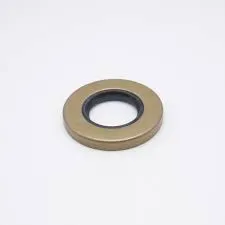9 月 . 25, 2024 18:32 Back to list
oil seal hydraulic
Understanding Oil Seal Hydraulic Systems A Comprehensive Overview
Oil seals are critical components in hydraulic systems, playing a vital role in preventing leaks and maintaining optimal hydraulic pressure. These seals are designed to retain oil and prevent contaminants from entering the hydraulic system, ensuring smooth operation and longevity of hydraulic machinery. In this article, we will delve into the importance of oil seals in hydraulic applications, different types of oil seals, their materials, and best practices for maintenance.
The Importance of Oil Seals in Hydraulic Systems
Hydraulic systems rely on the transmission of power through fluid under pressure. The functionality of these systems is heavily dependent on the integrity of their seals. Oil seals serve several key purposes
1. Leak Prevention One of the most significant roles of oil seals is to prevent hydraulic fluid from leaking out of the system. Any loss of hydraulic fluid can lead to a drop in performance and can compromise the entire hydraulic circuit.
2. Contaminant Exclusion Hydraulic systems are susceptible to the ingress of dirt, dust, and other contaminants. Oil seals act as barriers, keeping these foreign particles out of the system, thus protecting sensitive components such as pumps and actuators.
3. Pressure Maintenance Effective sealing is crucial for maintaining the necessary pressure levels within a hydraulic system. Oil seals help to ensure that the pressure remains stable, which is essential for the efficient operation of hydraulic machinery.
4. Efficiency Improvement By limiting leaks and preventing contamination, oil seals contribute to the overall efficiency of hydraulic systems. This efficiency can lead to reduced operational costs and extended equipment life.
Types of Oil Seals
There are several types of oil seals used in hydraulic applications, each designed for specific conditions and requirements. Common types include
1. Rotary Oil Seals Often used in rotating shafts, these seals fit snugly around shaft diameters and are designed to handle dynamic movements. They are frequently used in motors and pumps.
2. Static Oil Seals These seals are used for non-moving interfaces, primarily designed to prevent oils and other fluids from leaking between stationary components.
3. Lip Seals These seals have a flexible lip that conforms to the rotating shaft and is popular due to their simple construction and effective sealing capabilities.
4. O-Rings Although not traditional oil seals, O-rings are commonly used in hydraulic systems to provide a seal between different components. They are versatile and can be made from various materials to suit different applications.
oil seal hydraulic

Materials Used in Oil Seals
The materials used to manufacture oil seals are crucial as they must withstand various environmental factors, including temperature fluctuations, chemical exposure, and pressure
. Common materials include1. Nitrile Rubber (NBR) This is the most commonly used material for oil seals due to its excellent resistance to oil and wear, making it ideal for a wide range of applications.
2. Fluoroelastomer (FKM) Known for its exceptional temperature resistance, FKM is used in high-temperature applications where conventional rubber would fail.
3. Polyurethane (PU) PU seals offer high wear resistance and flexibility, making them suitable for dynamic applications.
4. Silicone For applications that require extreme temperature tolerance, silicone oil seals are preferred, although they may not be suitable for all hydraulic fluids.
Best Practices for Maintenance
To ensure the longevity and efficiency of oil seals within hydraulic systems, it is essential to follow best practices for maintenance
1. Regular Inspection Regularly inspect oil seals for signs of wear, cracks, or deformation. This can help in identifying potential issues before they lead to significant leaks or failures.
2. Proper Installation Ensure oil seals are installed correctly and aligned properly. Misalignment can lead to premature wear and failure.
3. Monitor Conditions Keep an eye on system pressure and fluid levels. Abnormal fluctuations can indicate seal issues that need to be addressed.
4. Use Quality Components Always opt for high-quality oil seals that meet the specifications of the hydraulic system. Investing in quality components can save time and resources in the long run.
In summary, oil seals are indispensable components of hydraulic systems, ensuring efficiency and reliability. By understanding their importance, types, materials, and maintenance practices, operators can significantly enhance the performance and lifespan of hydraulic machinery.